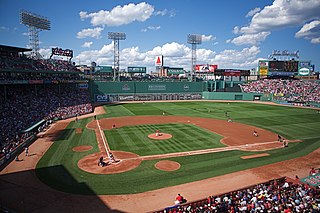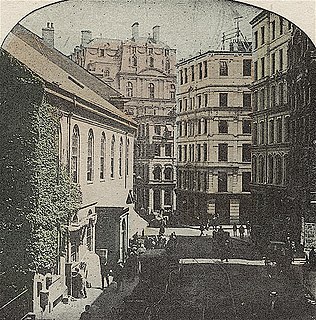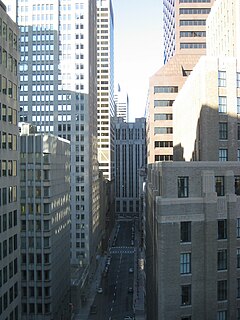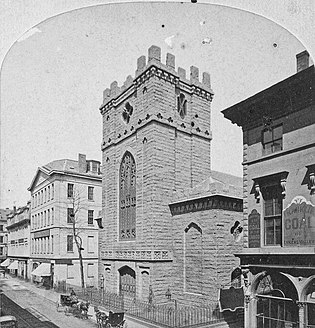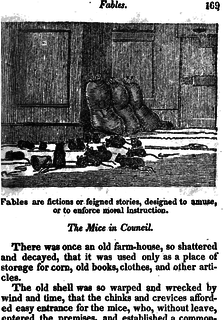
Jean-Antoine Watteau, better known as Antoine Watteau, was a French painter whose brief career spurred the revival of interest in colour and movement, as seen in the tradition of Correggio and Rubens. He revitalized the waning Baroque style, shifting it to the less severe, more naturalistic, less formally classical, Rococo. Watteau is credited with inventing the genre of fêtes galantes, scenes of bucolic and idyllic charm, suffused with a theatrical air. Some of his best known subjects were drawn from the world of Italian comedy and ballet.

Alvan Fisher was one of the United States's pioneers in landscape painting and genre works.

Elijah Hunt Mills was an American politician from Massachusetts.
Llanelly Bank was a 19th-century bank based in the Welsh town of Llanelli.
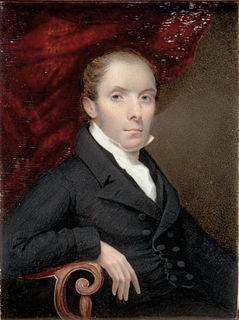
Thomas Edwards (1795–1869) was an artist in 19th-century Boston, Massachusetts, specializing in portraits. Born in London and trained at the Royal Academy, he worked in Boston in the 1820s-1850s, and in Worcester in the 1860s.

Annin & Smith was an engraving firm in Boston, Massachusetts, in the 19th century, established by William B. Annin and George Girdler Smith. The firm kept offices on Court Street and Cornhill.
William Hilliard (1778–1836) was a publisher and bookseller in Boston and Cambridge, Massachusetts, in the early 19th-century. He worked with several business partners through the years, including Jacob Abbot Cummings, James Brown, and Charles C. Little. President Thomas Jefferson selected his firm to supply approximately 7,000 volumes on numerous topics in 1825-1826, to create the University of Virginia Library.
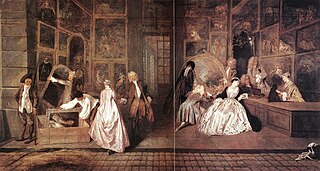
Edmé-François Gersaint (1694–1750) was a Parisian marchand-mercier (merchant) who specialised in the sale of works of art and luxury goods and who is noted for revolutionising the art market by preparing, for the first time, detailed catalogs with descriptions of the work and biographies of the artist.

Harding's Gallery in Boston, Massachusetts, exhibited works by European and American artists in the 1830s-1840s. The building on School Street also housed a newspaper press; the Mercantile Library Association; the Boston Artists' Association; and artists' studios. The building's name derived from painter Chester Harding, who kept his studio there.

Charles Hubbard (1801–1875) was an artist in Boston, Massachusetts in the 19th century. He kept a studio on Tremont Row and was affiliated with the Boston Artists' Association. He served as state senator from 1851-1852.
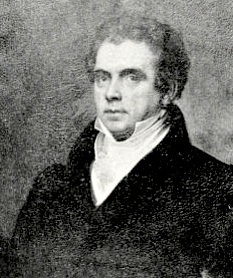
Doggett's Repository of Arts was an art gallery in Boston, Massachusetts, located at 16 Market Street. Its proprietor, John Doggett, was a gilder and framer with a retail shop near the gallery. The gallery exhibited originals and copies of works by European masters such as Titian, Rembrandt, Watteau, and David, and a few American artists, such as Thomas Sully, Gilbert Stuart, Samuel F.B. Morse, Rembrandt Peale, and William Dunlap. By July 1825, the gallery was converted into retail space for Doggett's frame, mirror and carpet business.
John McLean was an English furniture and cabinetry maker and designer. He was recognized as one of the best of his era, representing the best in English cabinetmaking. Examples of his furniture can be found in the Victorian and Albert Museum, The California Palace of the Legion of Honor and the Library at Saltram, Devon.

Sir Jeffry Wyatville was an English architect and garden designer. Born Jeffry Wyatt into an established dynasty of architects, in 1824 he was allowed by King George IV to change his surname to Wyatville. He is mainly remembered for making alterations and extensions to Chatsworth House and Windsor Castle.

The Salem Observer (1823-1919) was a weekly newspaper published in Salem, Massachusetts. Among the editors: J.D.H. Gauss, Benj. Lynde Oliver, Gilbert L. Streeter, Joseph Gilbert Waters. Contributors included Wilson Flagg, Stephen B. Ives Jr., Edwin Jocelyn, E.M. Stone, Solomon S. Whipple. Publishers included Francis A. Fielden, Stephen B. Ives, William Ives, George W. Pease, Horace S. Traill. In the 1880s Elmira S. Cleaveland and Hattie E. Dennis worked as compositors. Its office was located in "'Messrs P. & A. Chase's ... brick building in Washington Street'" (1826-1832) and the Stearns Building (1832-1882). "In 1882 the proprietors erected the Observer Building, of three stories, of brick, in Kinsman Place next to the City Hall." As of the 1870s, one critic noted that although "the Observer is supposed to be neutral in politics, ... it has always shown unmistakable signs of a strong republican tendency."
Robert Blake was the first of the Blake family of London cabinetmakers. Robert Blake is particularly known for his marquetry and for the ormolu-mounted commodes in tortoiseshell and ebony that he made in 1708–09, after a pair that André-Charles Boulle made for Louis XIV's Chamber at the Grand Trianon, on display in the New York Frick Collection. A pair of Blake commodes, completing the two in the Frick Collection was sold at Sotheby's for $658,000 on October 15, 2015.
Alexander Henderson of Press (c.1770–1826) was an 18th/19th century Scottish nurseryman and seed merchant, who was first Chairman of the National Bank of Scotland and Lord Provost of Edinburgh from 1823 to 1825.
